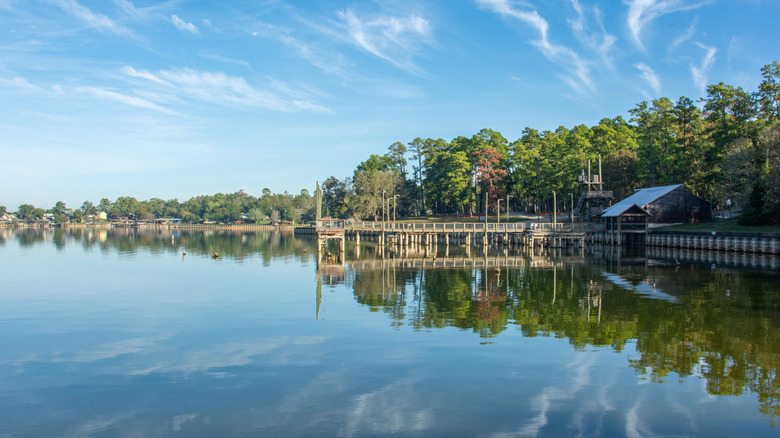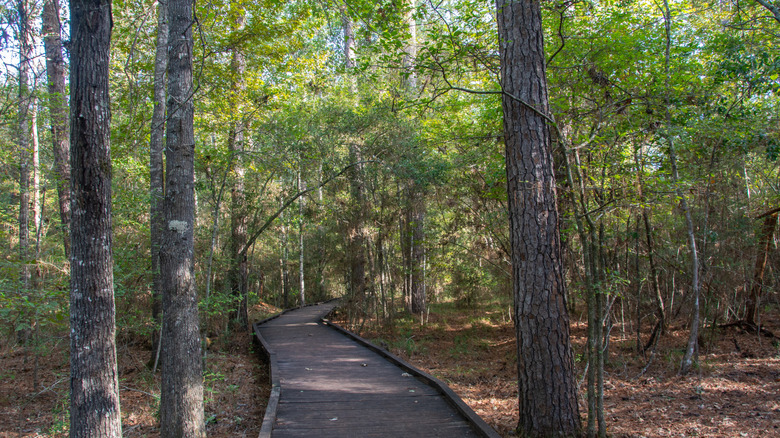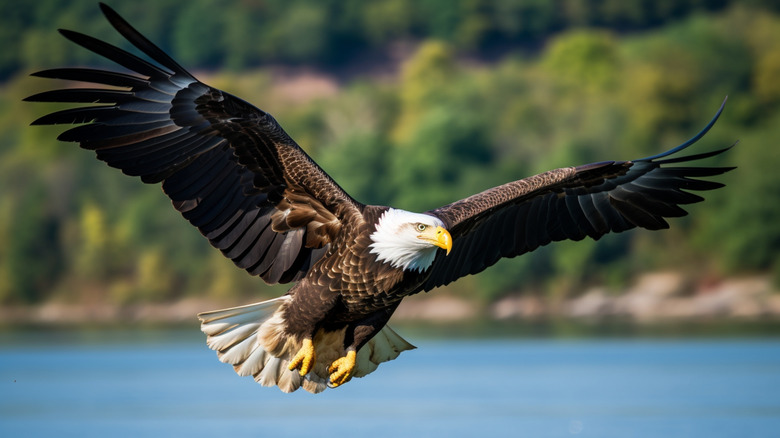A Beautiful Lakeside State Park In Texas Offers Hiking Adventures With Unique Wildlife
With 90 state parks to choose from in Texas, choosing one to visit can be tough. But with one of the largest lakes in the state, Lake Livingston State Park is prime for your next adventure. Situated around 7 miles southwest of Livingston and 73 miles north of Houston — one of the most underrated cities in the South U.S. — the park is home to some wonderfully diverse wildlife in peaceful surroundings. Lake Livingston was created in the 70s by damming the Trinity River, mainly to supply water to Houston and is now an ideal location for fishing, boating, and swimming. The park covers a 635-acre section of land along the southeast of the lake, where there are numerous outdoor activities to keep the whole family occupied.
Hire a boat for the day and explore the lake, and if you're a keen angler, you can expect to find an abundance of white bass, catfish, and crappies. Venture out to Pine Island, then watch the sun go down over the lake at the end of a day's fishing. For something a little more energetic, there's also kayaking, canoeing, or paddle boarding, which is the ideal way to reach some of the quieter beaches dotted around the shoreline. If you want to cool off and go for a swim, there are several designated swim areas.
Hiking the trails at Lake Livingston
For some activities on dry land, this scenic Texas park is the ideal place for hiking and camping. Day entry costs $6 and there are allocated parking areas throughout the park. The short trails in the area are ideal for spotting wildlife, and all six trails are rated easy or moderate — there's even wheelchair access in some places. Bikes are also permitted.
The shortest is Oak Flats Trail. At under half a mile long, it's located just inside the park entrance and is where you can see the rare Nutmeg Hickory tree, whose sweet nuts are a favorite meal for the forest animals. The Pineywoods Boardwalk Trail is just under a mile long and winds through wetlands and woodlands. If you plan to walk it at night, you'll likely hear the frogs before you see them at Frog Pond. The 2.1-mile Trinity Trace Trail runs along the shores of the lake and connects all the campsites in the park. It's ideal for watching wildlife, and you can take a detour up to the observation deck along the way for the best view in Lake Livingston State Park.
If you plan on staying overnight, there are several camping options from full hook-up sites to basic water-only tent sites. There are also 10 screened shelters — wooden cabins that sleep up to eight people and cost $35 per night. If you dream of waking up to a lakeside view, it's best to plan ahead, as these spots get snapped up well in advance.
Wildlife to look out for in the park
One of the main reasons to visit Lake Livingston State Park is the variety of wildlife that lives there. Armadillos, opossums, and raccoons may come sniffing around your tent at night, while white tailed deer are frequent visitors. On the larger side, bobcats and coyotes occasionally make an appearance but are usually shy and tend to stick to the quieter areas. It's also wise to be careful when swimming at dusk and dawn, as alligators live in the area and are most active at these times. Be sure to stay alert and follow the state park's alligator safety tips so you're prepared.
The park lies along both the Central North American Flyway and the Mississippi Flyway, and is ideally situated to spot some unique birdlife on their migration routes. Thanks to its diverse habitat, more than 200 species of birds have been spotted here, making it the ideal place to grab your binoculars and enjoy some bird watching. Bald eagles can be seen above the water, mainly in fall or winter, and make strong fishing rivals. Ospreys, great blue herons, downy woodpeckers, and red-shouldered hawks are just a few of the other species that are frequently seen throughout the park. In addition to the varied wildlife, the subtropical climate makes it an ideal habitat for plant life, too. The high rainfall means you'll be lucky enough to see flowers in bloom all year round in the park. The forest floor is a carpet of color with species like purple passion vine, scarlet sage, and goldenrod. And if you want to learn more about the wildlife around Lake Livingston, learn new skills, or have some treasure hunting fun with geocaching, park rangers organize events and workshops throughout the year. For more outdoor adventures, check out the best national and state parks all over Texas.


